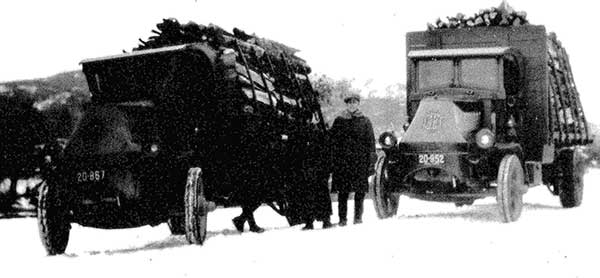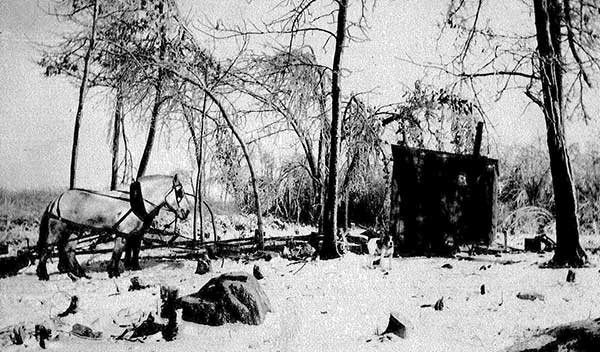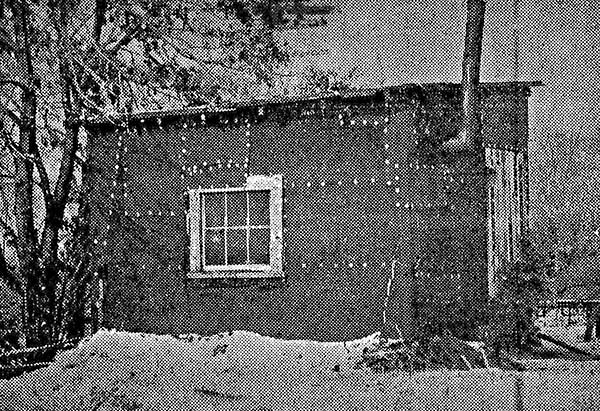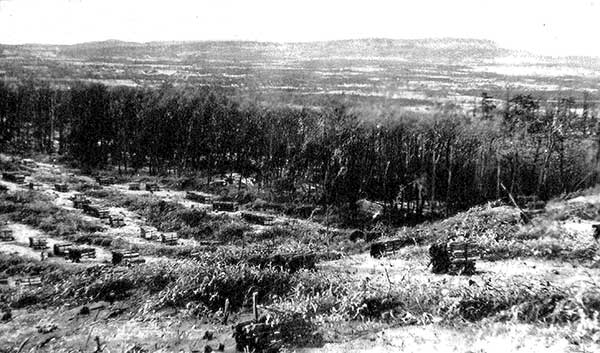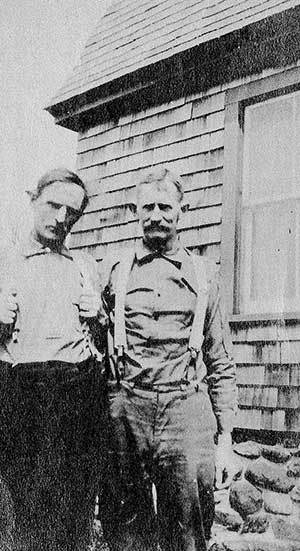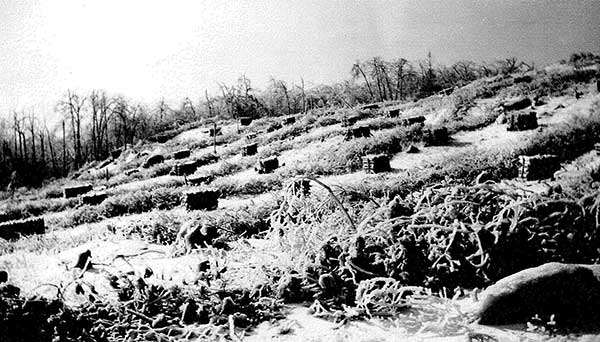|
|
||||||||||||
 |
 |
|
Wolcott Historical Society History for April 2014 By Florence Goodman Last month I began a series of stories about life in Wolcott in 1930 written by Clarence Atwood. I introduced the article by giving a brief history of the Atwood family and their farm, which was located on Woodtick Road. I need to make a correction to one section of that article before I begin this one. Clarence's mother, Florence Cole Atwood, died in 1987, not the early 1970's as I had stated and most of the Atwood children were adults and living elsewhere when Clarence and his wife, Gloria moved into the house in the late 1970s.
This month I will share another section of Clarence's handwritten memories, which is about woodcutters. "The brass factories of this time used wood fired muffles to anneal [heat] their products. To satisfy their demand for wood, a whole industry was emplaced in Wolcott. Enterprising men bought large tracts of woodland, often for only a few dollars per acre, which they then proceeded to clear-cut for the wood. The actual cutting was done by woodchoppers; these seemed always to be middle-aged bachelors without family ties. They dressed in rough clothes and wore felt boots and usually owned nothing more than their axe and perhaps a crosscut saw. The men for whom they worked provided a choppers shanty- a one room dwelling with room inside for a bed, a store, a table and probably a chair or two. A shelf on the wall held a few cans of food while their one or two pots or pans and the washbasin hung on nails. A path in the back led to a pit toilet, which more often than not was merely a pole or plank nailed between two trees and over a pit. Water was carried in a pail from a nearby spring or brook and after being used was thrown out the door to soak into the ground.
These men were paid by the cord for the wood they cut and piled and made ready for the teamsters. This wood was all chopped with the axe, though sometimes, large trees were sawn with the crosscut saw and split for ease of handling. Most sticks were cut to a length of four feet so a stack four feet high and eight feet long was a cord. For cutting this much wood, the chopper might receive fifty cents to one dollar. The chopper told his boss what he needed for groceries and these were provided- usually a few cans of beans- bread- coffee and milk and whatever else the boss might think he would like. Empty cans were tossed in a heap behind the shanty. When the tract of land had been all cut, the boss and a couple of men would dismantle the shanty into several manageable pieces and move it to a new location and the woodchoppers would start over in a new place.
The cut piles of wood would be moved by a hired teamster with his horses and wagon to a roadside location where it could be picked up as needed and carried to the brass mill. Among the suppliers to the mill were Henry Norton on Spindle Hill- Dewitt Cole in Woodtick and Arthur Cole on East Bristol Road [which today is Woodtick Road]. Chase Brass and Copper and American Brass were the chief users of the wood.
It must be noted that for two or three years after an area was clear cut, blueberries grew in profusion and it was often possible to pick a quart without moving from one small patch."
This particular story really intrigued me because I never thought about acres of trees being cut down in Wolcott in the 1930s to fuel Waterbury's factories or that blueberries would flourish after these forests were cleared. My family moved to Bound Line Road in 1949 and I remember picking endless blueberries every summer all around our house, as well as, in Pritchard's fields where Wolcott High School is today.
I am forever indebted to the Atwood family for sharing their father's stories and photographs with us. I hope this story about woodcutters adds to your understanding of life in rural Wolcott in 1930.
(Information for this article was taken from hand written stories of "Wolcott in 1930" by Clarence Atwood and pictures from the Atwood family's albums which were scanned by Mark McDonald)
Arthur M. Cole's trucks loaded with 5 cords of wood. Picture taken at the corner of Woodtick and County Road and Center Street. These trucks had solid tires and a chain drive.
Woodcutter's shack located on the property being clear-cut.
Woodcutter's shack located on the property being clear-cut.
Cords of wood; shows mountain in distance: Lower County Road in 1925.
Woodcutters Cornwall Miller and Ed Warden from NY state. They worked for Mr. Norton.
Cords of wood in the fields ready to be loaded and hauled to the roadside..
To view past installments of the Wolcott Historical Society News, click here.
|
|
|
[Home]
[News]
[Purpose]
[Calendar]
[Museum]
[Membership]
[History]
[Contacts]
[Links]
All material at Wolcott Historical Society Web sites Copyright © 2000-2014 Wolcott Historical Society |
